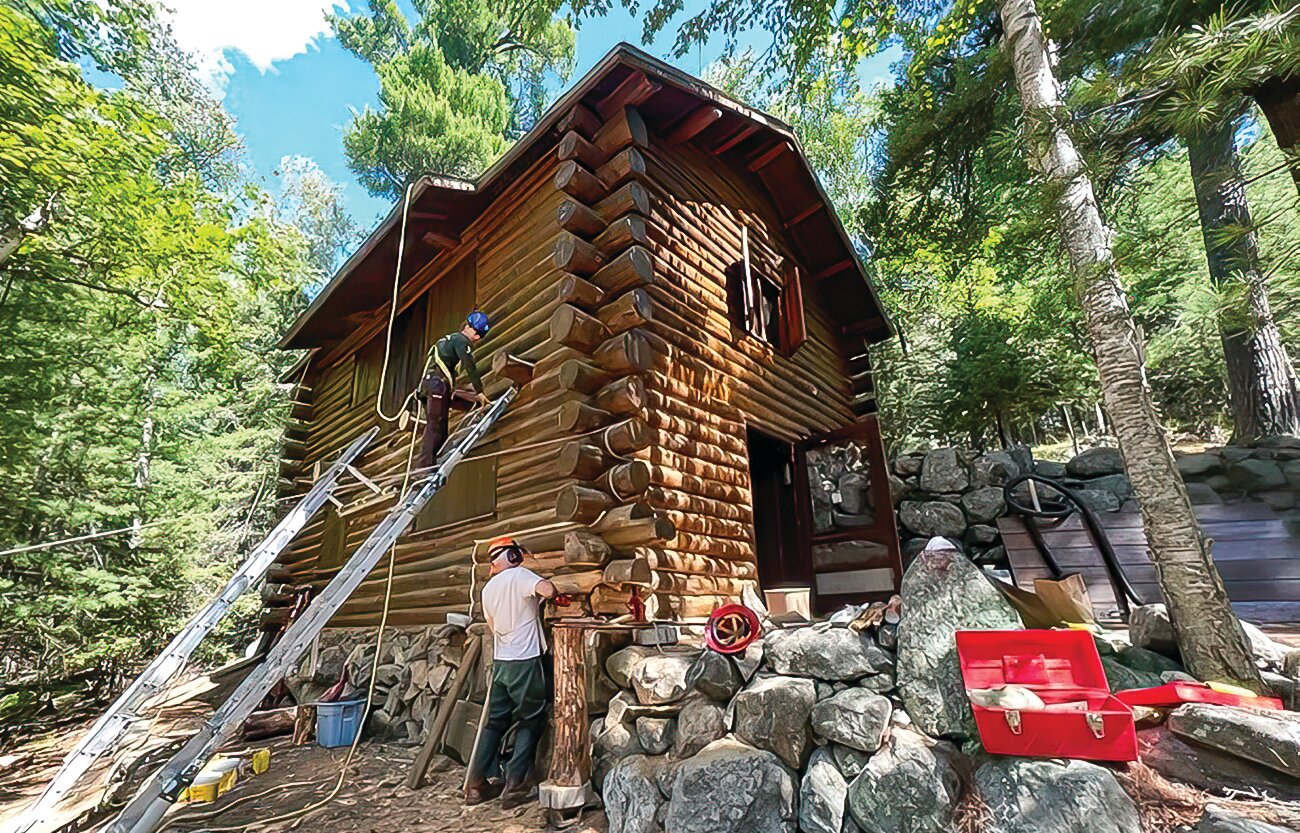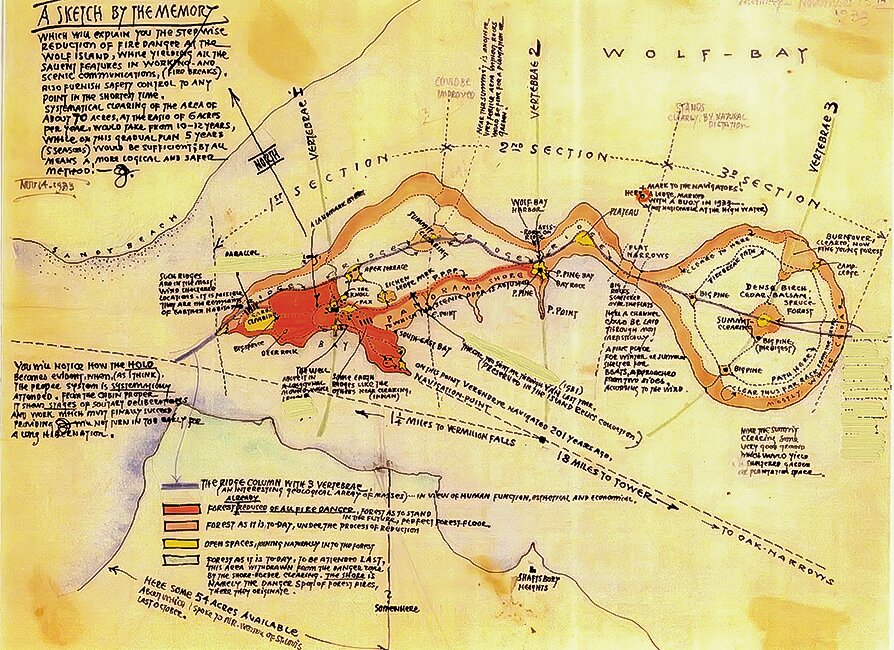Support the Timberjay by making a donation.
PRESERVING HISTORY
Rustic Wolf Island cabin, trails, being restored to allow for more public use
LAKE VERMILION- A historic rustic cabin built by a Minneapolis architect on Wolf Island on Lake Vermilion is undergoing restoration by the U.S. Forest Service, which is looking at making the island …
This item is available in full to subscribers.
Attention subscribers
To continue reading, you will need to either log in to your subscriber account, or purchase a new subscription.
If you are a current print subscriber, you can set up a free website account and connect your subscription to it by clicking here.
If you are a digital subscriber with an active, online-only subscription then you already have an account here. Just reset your password if you've not yet logged in to your account on this new site.
Otherwise, click here to view your options for subscribing.
Please log in to continue |
PRESERVING HISTORY
Rustic Wolf Island cabin, trails, being restored to allow for more public use
LAKE VERMILION- A historic rustic cabin built by a Minneapolis architect on Wolf Island on Lake Vermilion is undergoing restoration by the U.S. Forest Service, which is looking at making the island more accessible for recreational use.
Superior National Forest LaCroix District Ranger Sunny Lucas told the Timberjay on Monday that a crew of young adults with the Northern Bedrock Historic Preservation Corps (NBHPC), a Duluth-based nonprofit, is spending three weeks this summer working on the cabin built by John Jaeger, an Austrian immigrant and accomplished architect who bought Wolf island after first visiting it in 1906. The cabin was reportedly built in 1929 by Finnish-American craftsmen from the Tower area. The two-story cabin, built on the side of a hill to allow for ground level access to the second story, is a well-preserved example of an early 20th-century rustic recreational cabin.
Jaeger’s summers at the cabin were notable for the diligence and care he took in documenting the island’s archeological history. He drew a series of detailed maps highlighting rare historic and geological features of the island, capturing the story of a pre-settlement island used by both the Ojibwe and voyageurs. Jaeger witnessed a working Ojibwe canoe building camp on his first visit to the island, and later discovered a navigation point used by voyageurs more than 200 years prior to his find.
The cabin and island were acquired by the Forest Service from the McPeak family in 2015 through the Trust for Public Land.
This is the second summer the Forest Service has partnered with NBHPC to work on the cabin and island. In 2022, workers installed a new rolled asphalt roof, completed fuel reduction work to create defensible space, maintained the structure’s windows and cleaned the cabin exterior and interior.
This summer, Lucas said the NBHPC crew dismantled an old unsafe deck that was causing damage to one of the exterior logs and has been constructing of a new one. They’ve also cleared more brush around the cabin for fire prevention, made temporary repairs to a dock, and have been cleaning and inventorying the contents of the cabin.
“There aren’t any valuables or anything, but there are old magazines and things you would have in an old cabin,” Lucas said. Also left behind were some pieces of furniture, and Lucas said some items may stay for use while others may be preserved differently.
Forest Service archaeologists Lee Johnson, the Heritage Program manager from the Duluth office, and Greg Heide, who covers the LaCroix, Kawishiwi and Laurentian districts, have been supervising the work to ensure historical accuracy, Lucas said.
The Jaeger project dovetails well with the mission of NBHPC, which is to develop enduring workforce and life skills through service learning in historic preservation and community stewardship. Partnering with the AmeriCorps program, NBHPC provides young adults 18-25 with hands-on experience in the preservation trades. NBHPC has had a strong collaboration with Forest Service history preservation projects in recent years. The narrative for a 2021 award they received from the Forest Service said that NBHPC had provided nearly 14,000 hours of labor for projects over a three-year period.
Future plans
Lucas said the Forest Service is looking at possibilities for making the island a destination for recreational use.
“The goal is really to have safe public access to the island and the cabin, while also preserving it,” Lucas said. “One idea is having at least one day use site, probably on the far side of the island, with a picnic table and fire grate. The Vermilion Lake Association is interested in partnering with us on something like that, potentially.”
They are also exploring making the cabin available to rent, although that idea still needs approval from higher up. Aware of the long time it takes to turn plans into reality, Lucas said that a recent Forest Service fee increase proposal included “Wolf Island Campground” and proposed a fee of $150 a night for up to eight occupants.
“We wanted to do that now even if it doesn’t happen for a couple of years,” Lucas said. “The fees we get from rental would go to maintain the cabin and the grounds.”
Lucas said they’d also like to look at the possibility of clearing and restoring some of the trails around the island with interpretive signage.
“There’s some really neat history there that will be exciting to incorporate into some signage,” she said.
Lucas noted that the LaCroix District has been engaged closely with the Bois Forte Band as they look at development options. She said that Bois Forte Tribal Historic Preservation Officer Jaylen Strong has been “heavily involved” in conversations about the island.
“Bois Forte has been going out there annually since we acquired the island,” Lucas said. “Potentially, Bois Forte could reserve that cabin– there have been a lot of conversations of different ideas of how they would like to use it. Do they want to bring tribal youth out there for different workshops or have elder picnics, for example. When we put together our formal proposal, the Band will have a voice in it, as well as Grand Portage and the 1854 Treaty Authority, and we’ll all have an opportunity to look at those proposals and to provide feedback before they even go to the public, so we’ll definitely incorporate any of their thoughts.”
When a proposal is released for public comment next year, as mandated by federal regulations, Lucas wants to be sure the public has the opportunity to be well-informed about the plan.
“I think it would be great if we did an open house or a public meeting of some kind where we could put up some slides of some of these things,” she said.
There’s also more work to do on the cabin, and another NBHPC group will be back next summer. There will also need to be some additional infrastructure work to accommodate island users, such as garbage cans and toilets. But Lucas is enthusiastic about getting the ball rolling as quickly as they can.
“It’s all very exciting. It’s one of the coolest projects in the LaCroix district,” she said.
(Note: Numerous sources show the spelling of Jaeger’s last name as “Jager.” The Timberjay reviewed an array of historical documents, including passport applications, naturalization record, census records, and obituary to establish that Jager is the original spelling. A Minneapolis Historical article stated that the proper pronunciation is YAH-ger.
However, Forest Service archaeologist Lee Johnson responded to this information with the following explanation for the revised spelling: “All the documentation we have uses the spelling “Jaeger”. The McPeak family gifted us Jaeger’s historical file with letters and maps and he always signs them Jaeger.” Interesting, though, it was not uncommon for eastern European immigrants to Americanize the spelling of their surname.”)











